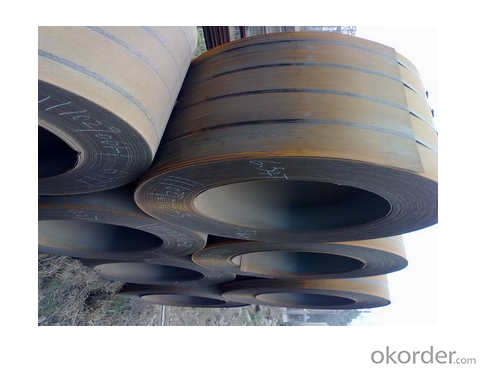Quick Details
Standard: DIN
Grade: HX160YD/HX180/BD/HX300LAD
Type: Steel Coil
Surface Treatment: Galvanized
Application: High proof strength for cold forming
Width: 600-1534mm
Length: Coil
OKorder Service Pledge
OKorder Financial Service
You Might Also Like
Standard: DIN
Grade: HX160YD/HX180/BD/HX300LAD
Type: Steel Coil
Surface Treatment: Galvanized
Application: High proof strength for cold forming
Width: 600-1534mm
Length: Coil
| Packaging Details: | Oscillated wound: one coil per bundle, inner is the protecting humidity-proof wax paper. Medium is plastic film. Outer is sackcloth or compound paper packing. Coil to be laid on single type pallet (one pile per pallet) |
|---|---|
| Delivery Detail: | Depends on specification and order quanity. |
(1) Type of zinc coating finish: regular spangle, minimized spangle and skin-pass.
(2) Types of surface qualities: as coated surface, improved surface and best quality surface.
(3) Surface treatment: chemically passivated, chromate-free passivation, phosphate, anti-finger print, phosphateand, self lubricating film, and untreated.
(4) Type of oiling: oiled and unoiled.
(5) Coil ID: 508/610mm.
(6) Grade: HX160YD/HX180/BD/HX300LAD; Application: high proof strength for cold forming.
Thickness | 0.13-1.5mm,Thickness tolerance:±0.02mm |
Width | Less than 600mm-1250mm,Width tolerance:-0/+3mm |
Coil weight | 3-6MT |
Coil ID/OD | Coil ID:508±10mm ; Coil OD: 900-1200 mm |
Paint Coating | 22-25(um) |
Colors | refer to RAL numbers or customer sample,common colors are sea blue, white grey and bright red. |
Surface | top coating:17-25um;back coating :5-7 um |
Gloss | The gloss can changeable by Customers' Request.we can also do some High gloss, with some sparkling granule in it. |
Paint type | PE or PVDF |
Standard | GB/T 12754-2006;ASTM A 755;EN 10169;JIS G 3312;AISI;BS;DIN |
Grade | CGCC/SGCC/SGCH/SPCC |
application: | Widely used in roof, construction, door and windows, solar heater, cold room, kitchen utensils, household appliance, decoration,transportation and other lines. |
What is the application of Steel Coil?
There are two sides,one is out side: Workshop, agricultural warehouse, residential precast unit, corrugated roof, roller shutter door, rainwater drainage pipe, retailer booth;the other is inside: Door, doorcase, light steel roof structure, folding screen, elevator, stairway, vent gutter.

Send your message to us
OKorder Service Pledge
OKorder Financial Service
Similar products
Hot products
Hot Searches
Related keywords